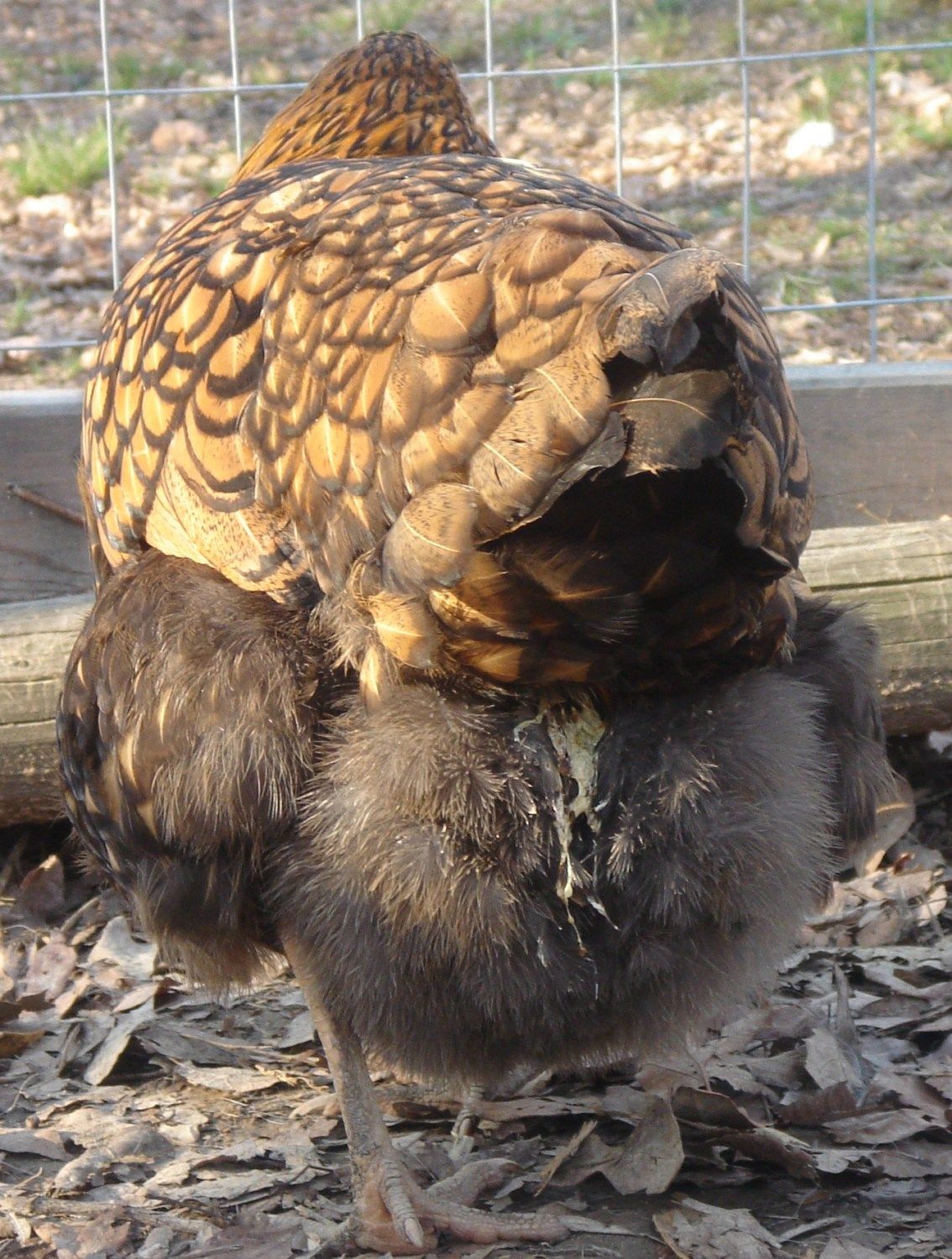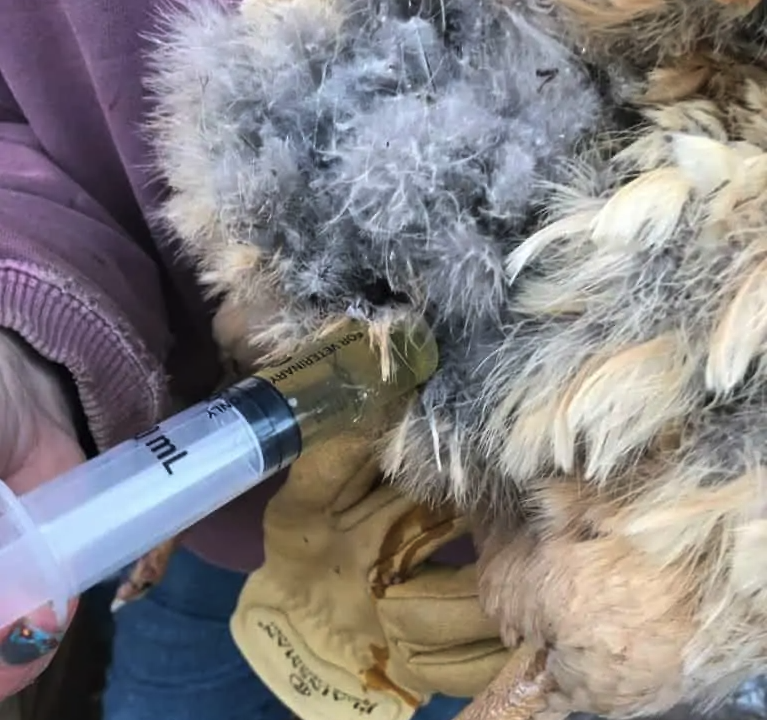Water Belly (ascites)
Ascites, also called Water Belly, is a common problem commonly affecting fast-growing meat chickens, but can also occasionally affect laying chickens as well. It is not a disease, so it is not contagious to the rest of your flock; but rather, is a symptom of a much deeper problem, and unfortunately, the underlying cause is eventually fatal.
Ascites caused by right ventricular failure (RVF) which causes abnormally high blood pressure between the heart and lungs (called pulmonary hypertension). This condition leads to increased blood pressure in the veins as well as excessive fluid build-up in the liver which leaks into the abdominal cavity of the chicken. Eventually, ascites leads to heart failure and death.
There are no clinical signs that present until RVF occurs and ascites develops (enough fluid collects to be noticeable).
- Waddling gate
- Cyanotic (pale or bluish) comb and wattles.
- Red, barren (no feathers) skin on the abdomen, below the vent.
- Squishy but firm abdomen.
- Lethargy
TREATING WATER BELLY
Unfortunately, there is no cure for ascites once it has developed. If you suspect a higher incidence of ascites in a flock it is important to investigate potential contributing or underlying factors so that they can be prevented in future flocks or, if still currently impacting this flock, changed to prevent additional birds from becoming affected.
The only thing that can be done for a chicken affected by water belly, is to carefully drain the liquid from the abdomen as necessary. Doing so will not only positively impact the birds’ quality of life, but can also significantly prolong its life.
One can do this by utilizing a Water Belly Draining Kit, and manually draining the excess fluid with a needle and syringe every so often. There are numerous YouTube videos available on this topic.
There are no additional notes available on this topic at this time.


